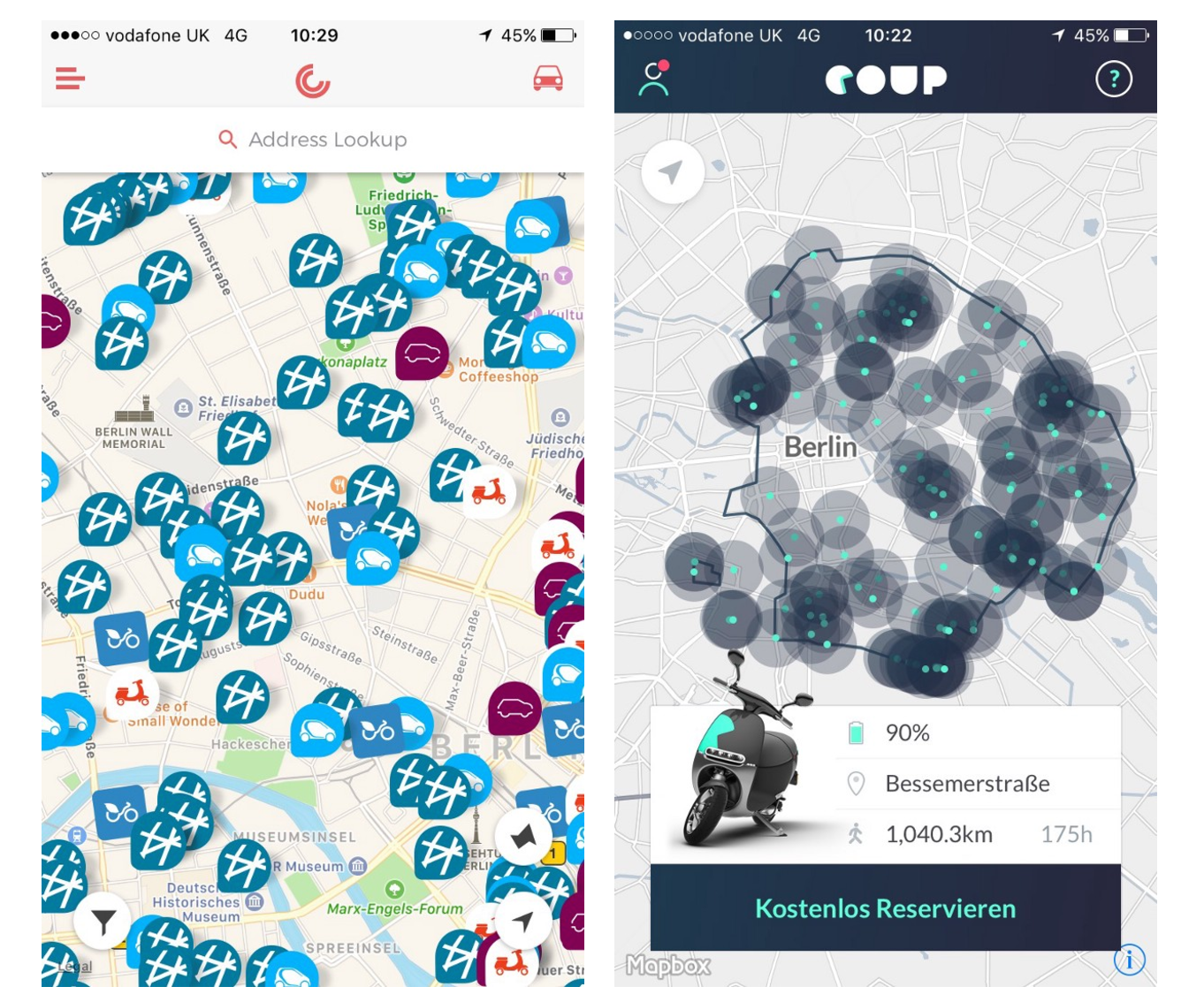(Left) A screenshot of the central map UX of Carjump, centered on Rosenthaler Platz in Berlin. Each bubble is a car, bike or scooter. (Right) A similar screen from COUP
This post first appeared on Colin's blog, Venturing.io
When I'm in Berlin I'm often traveling from meeting to meeting or from Mitte back home to Kreuzberg. I prefer to cycle but some days the weather or distances don't really allow it. On those days I use vehicle sharing.
In large cities like Berlin, London or New York (and to an even greater extent in their EM cousins Beijing, Sao Paulo, Cairo, Jakarta…) cities can be frustrating and expensive to travel within. Many people criss-cross their cities 3 or 4 times a day.
In Berlin Uber isn’t really present (although uberX has recently relaunched) and taxis are relatively expensive. Most people move around on:
-Bikes
-Public Transportation (very robust, with over and underground trains, trams and buses)
-Private vehicles
-Vehicle Sharing
All three of these methods of urban mobility have been around at least 100 years (and for a more general take on mobility read this post by my colleague Nicolas). What I want to talk about here briefly is the fourth mode, and in particular flexible vehicle sharing, which has only really been around in its current form since 2008.
The distinction between flexible and fixed vehicle sharing is important. Fixed schemes have been around longer (like Zipcar's traditional service) and allow you to rent a car from a fixed location but require you to return it to that same location. These schemes are useful if you want to take a trip from A>B>A, like heading to IKEA to buy furniture. Flexible schemes on the other hand are far more useful, because they can be used for any trip from A>B (as long as both origin and destination are within the scheme's geofencing zone).
Berlin is one of if not the global capital of vehicle sharing. I'm aware of at least 12 different vehicle sharing schemes in the city. My estimate is that there are close to 3,000 free floating vehicles in the city (Car2Go with at least 1,000, DriveNow with 800 ..etc) What this means in practice is that I almost always find a vehicle within a 5 minute walk, and more often than not within 3 minutes.
These services are cheap. Car2Go costs on average €0.30 per minute meaning a 10 minute ride puts you back roughly €3.00. DriveNow is marginally more expensive at around €0.33 per minute, and the scooter sharing services are even cheaper with eMio at €0.19 per minute or COUP at a flat €3.00 fee for a ride up to 30 minutes. To put that in perspective a single ride on the u-bahn (subway) costs €2.70.
We've done an overall pricing analysis that shows what a 3 mile ride in a lot of major cities across the US and EU will cost across various services:









